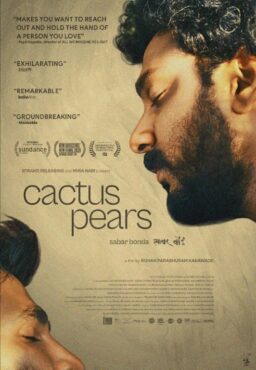Empathy can an inherent part of the documentary form, but it seems to have been a speciality during this festival. The US Documentary Comp is full of stories in which filmmakers find a story in which they recognize a person’s complicated experience, and then try to pass that on for the viewer. One of the most intense, polarizing examples of can be found in Meg Smaker’s stunning “Jihad Rehab,” which profiles four former Guantanamo Bay detainees as they experience rehab at the world’s first terrorism rehabilitation facility, the Mohammed bin Nayef Counseling and Care Center in Saudi Arabia. Some viewers would already scoff at the premise, but as this documentary points out, there are many flaws in that way of thinking for any society. As one of the instructors says in the beginning of the film, “Ok, you punish them. Then what?”
Smaker and her crew follow four detainees with ties to Al Qaeda and terrorist training camps—Nadir, Ali, Mohammed, and Abu Ghanim—as they participate in classes that are geared toward reintegrating them into society. They take courses about balancing their finances, Islamic law, and even marriage. One of the main instructors always teaches with a warm smile, a stark difference to how one detainee was told he could not draw a flower at Guantanamo Bay because it was “happy.” Juxtaposing these complicated pasts with the present, the documentary pulls off an incredible feat of empathy: you see these men as people, not just for a certain part in their lives they are trying to move from. You also understand just how horrific and backwards Guantanamo was in comparison, and appreciate the significance in their being able to open and close doors on their own volition.
The process of making this film is far more about us understanding their stories than it is for them. Smaker and her team brilliantly illustrate their experiences of getting into extremism, inspired by the way they choose to express themselves in an art class (watching Abu Ghanim’s single line drawing turns into a whole short film, ending with chaotic clouds of angry scribbles, is especially effective). Smaker pulls out the larger narrative behind it—what they actually felt after 9/11, or the reason that they got involved with terrorism, and usually at a young age. “Jihad Rehab” can be a vital bridge between two mindsets that instantly hate and fear each other, including our own. And at the same time, its clarity reckons with how the Center has about an 85% success rate, that it is not perfect. Still, it believes in these men.
“Jihad Rehab” does not present a type of emotional arc about how these men change at the Center, which can require some adjusting to—it initially seems like we’re in for a gripping emotional journey, especially with the overzealous amount of shots of pigeons bursting into flight in slow motion. Rather this is about what immense power a system can have over someone’s well-being, and how that can greatly lead to their improvement and sense of self. Their treatment within Guantanamo Bay, in the hands of Americans, for example, tells of how much torture is a dead end, creating a trauma this Center also must care for. The same extreme notes are felt when a new regime in Saudi Arabia prevents these men from finding work after they graduate from the program, because they are originally from Yemen, and are also not allowed to leave the country. “Jihad Rehab” makes you look close at lives we as Americans have spent so long trying to look away from, and by the end we better recognize a frustration that can lead to such deadly recidivism. Living in limbo can be its own dehumanizing hell.

The most experimental, and certainly one of the most personal stories from this year’s Documentary competition was “I Didn’t See You There,” by director Reid Davenport. This film is all first-person, about how Davenport sees the world, and how the world sees him and his disabilities. It is a journal entry with meditations on the circus, using a visual language that invites you to truly see what you are looking at, to consider it. There is a through-line with what he encounters along the way, sometimes by obstacles that show a distance between people’s consideration for others.
The main inspiration for this documentary is a red and yellow circus tent that was raised by Davenport’s Oakland apartment not long after he started filming. It inspires him to think and talk about freak shows, about the people of color and the queer and disabled people who were a part of the spectacle, but were not truly seen. This focus on the circus, on entertainment, becomes a chorus throughout this experimental film that wrestles with the past and present in Davenport’s voiceover and what footage he chooses to include. He muses on visibility and invisibility, and that becomes one of the documentary’s returning motifs—scenes in public in which people acknowledge his experience (but sometimes get close to patronizing), or a grotesque moment when an electrical cord is blocking the access ramp. In two instances he flies home to Bethel, CT, where he faces the gross monolith of circus legend PT Barnum, who was born and raised in that town.
Davenport organizes his meditations with distinct motifs, using them as chapters to his day-to-day experience. The experience of motion can be overwhelming and beautiful: as Davenport’s chair rides through a clear Oakland day, the camera is pointed to the ground, creating a Stan Brakhage-like rush of pavement speckling the screen, with brief moments of breath offered by sidewalk bumps. Or the camera takes a long look at the blue skyline, or races along fences, showing how expansive they can be. The images use repetition but they are not about creating a hypnotic effect; instead it’s disorienting, especially when they include stressful percussive accompaniment. “I Didn’t See You There” is first-person poetry in captivating motion, expressed with a singular, assured artistic voice.

Healthcare is a human right, and abortion is healthcare. The JANE Collective of Chicago reckoned with in the late 1960s, this at a time in which abortions were illegal, but just as vital as they are today to anyone who wants one. Their story is one of a group of smart people organizing themselves, establishing secret codes and doing outreach for safe abortions, while also having an attitude that was about comforting someone in these circumstances. Everyone was taking a risk. It was the right thing to do, and it was against the law. “The Janes,” which will premiere later this year on HBO, is a peppy history lesson on this heroism, and the movement that inspired it.
The codename for the collective was JANE, and directors Tia Lessin and Emma Pildes gather many of the Jane members who were involved in the process. Galvanized by the protests in the late 1960s—especially when it became about women’s liberation, and the vocal power was not about the men—they created an intricate system that helped women in and around Chicago get the medical procedure they needed at whatever price they could pay for. The Janes were able to assist with 11,000 abortions, and one can only imagine how many lives they changed by trying to operate with care, instead of trauma-inducing coldness.
It’s invigorating to hear the story in the words of different Jane members; they talk excitedly about how they advertised the group, kept it secret, and sustained a sisterhood in the process. Lessin and Pildes depict it with equal triumphs and losses—not every case with a success, and sometimes there was a woman who could not be helped by the Janes for one reason or another. The documentary also touches upon their dominating appearance of being middle-class white women, and how that might have affected who did and did not come to see them. The tone of this documentary conveys the danger and the drama of doing such an illegal activity, while then making the third act introduction of Roe v. Wade all the more triumphant.
The backdrop of “The Janes” feels to be important—this is a story specifically about Chicago, Illinois. The city looks particularly beautiful and alive in the period footage collected here, and this documentary is about the specific worlds of Chicago activists, grotesque Chicago cops, and the state’s history with abortions. The Chicago Tribune just reported that almost 10,000 people from out of state came to Illinois for abortions last year. The city and state may be helping lead the care, but as a nation the story of the JANE collective is as vital as it ever was.












